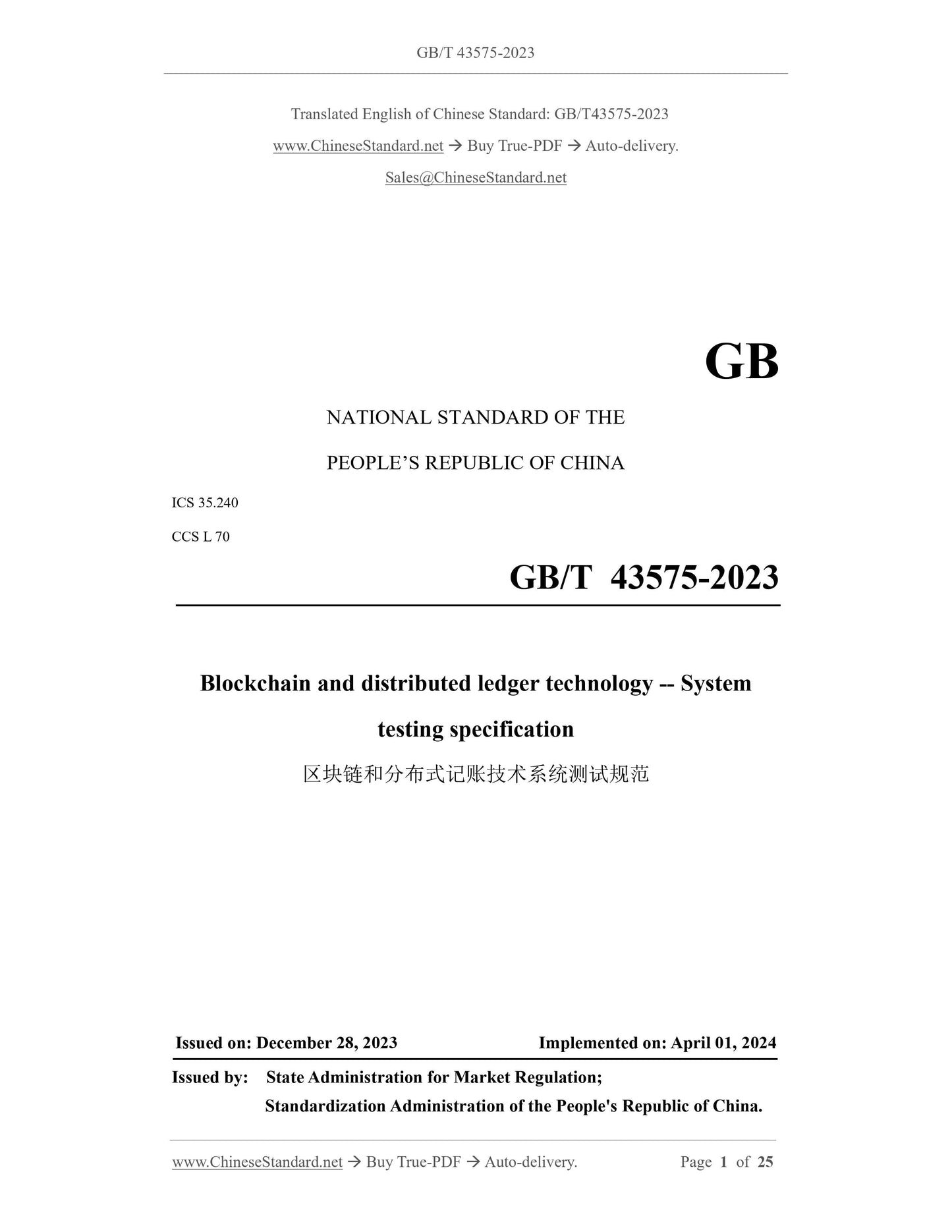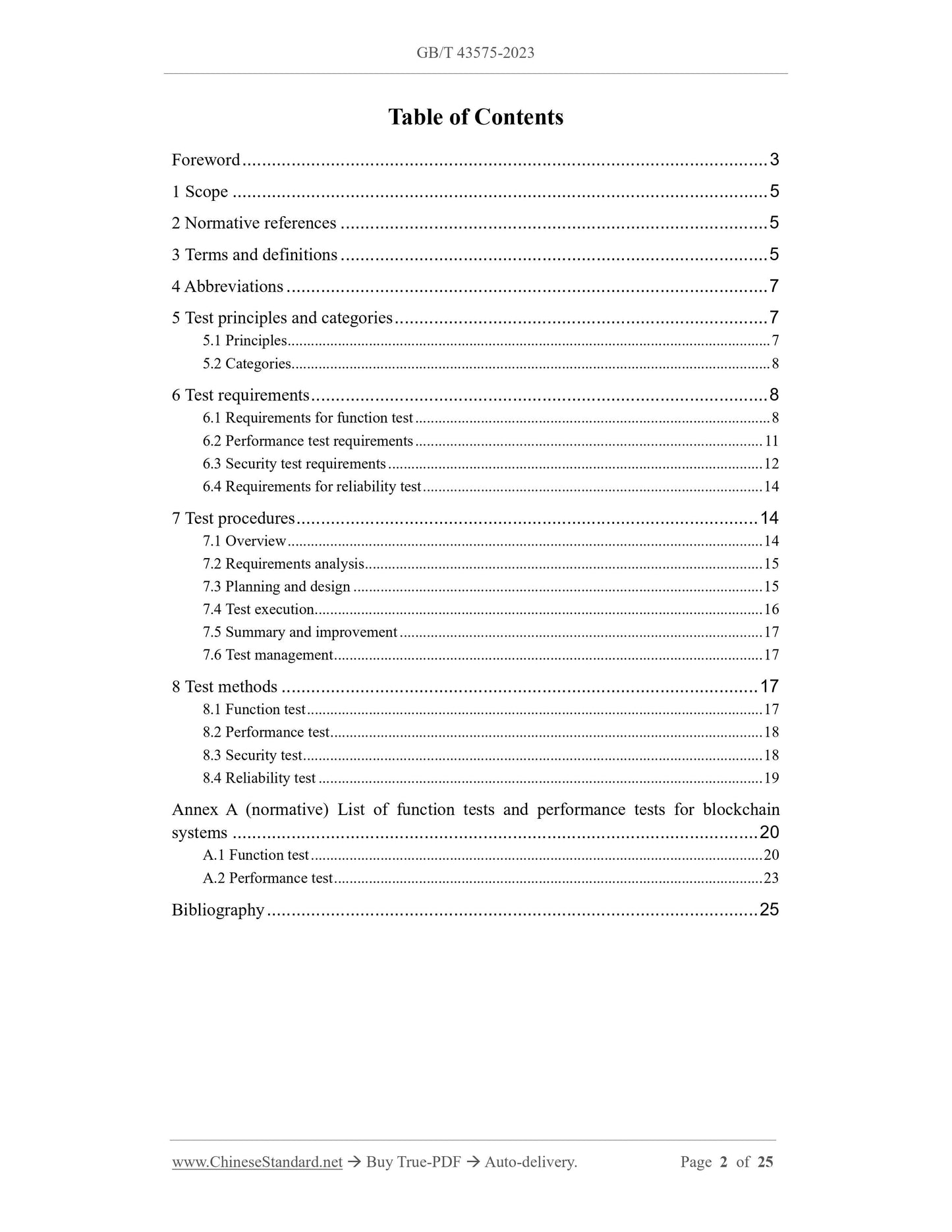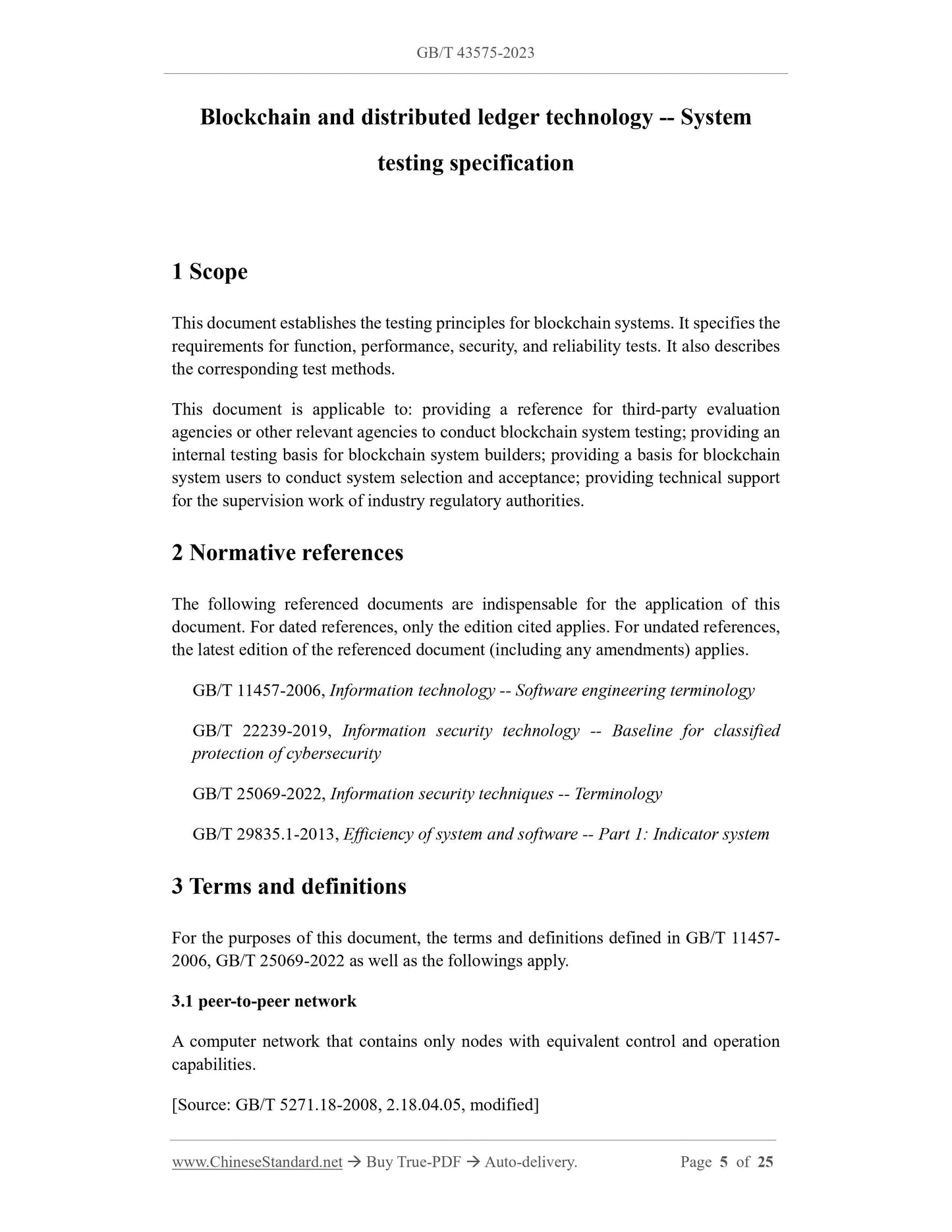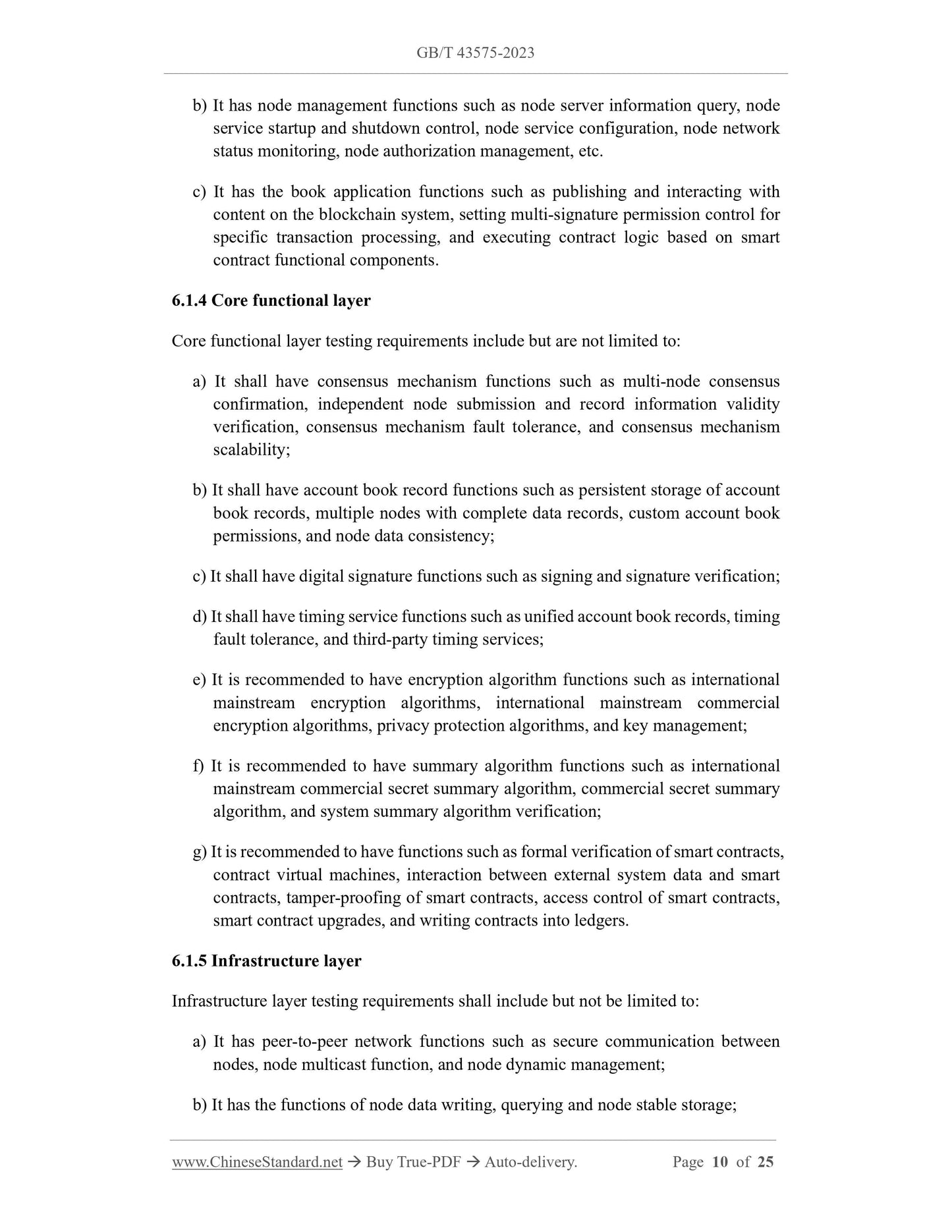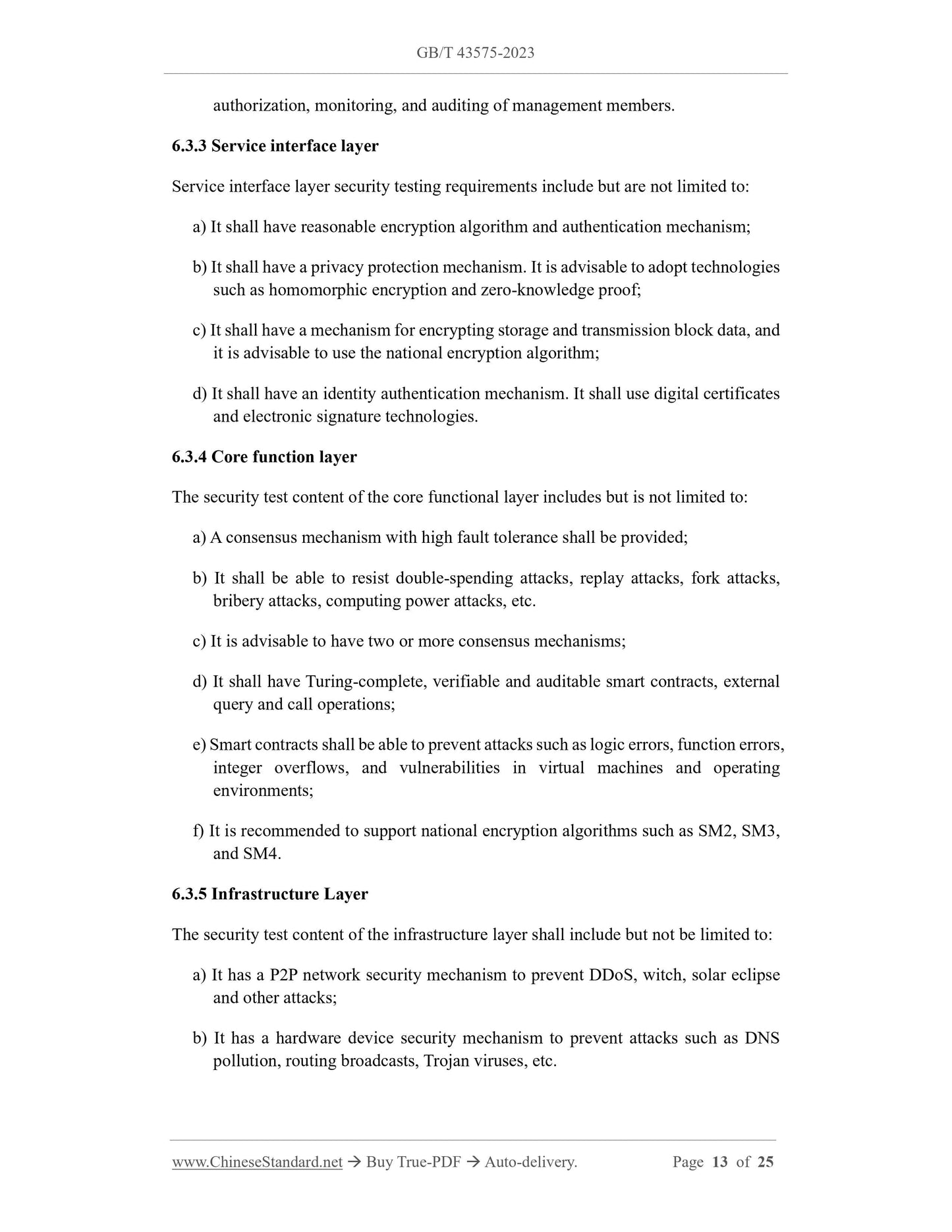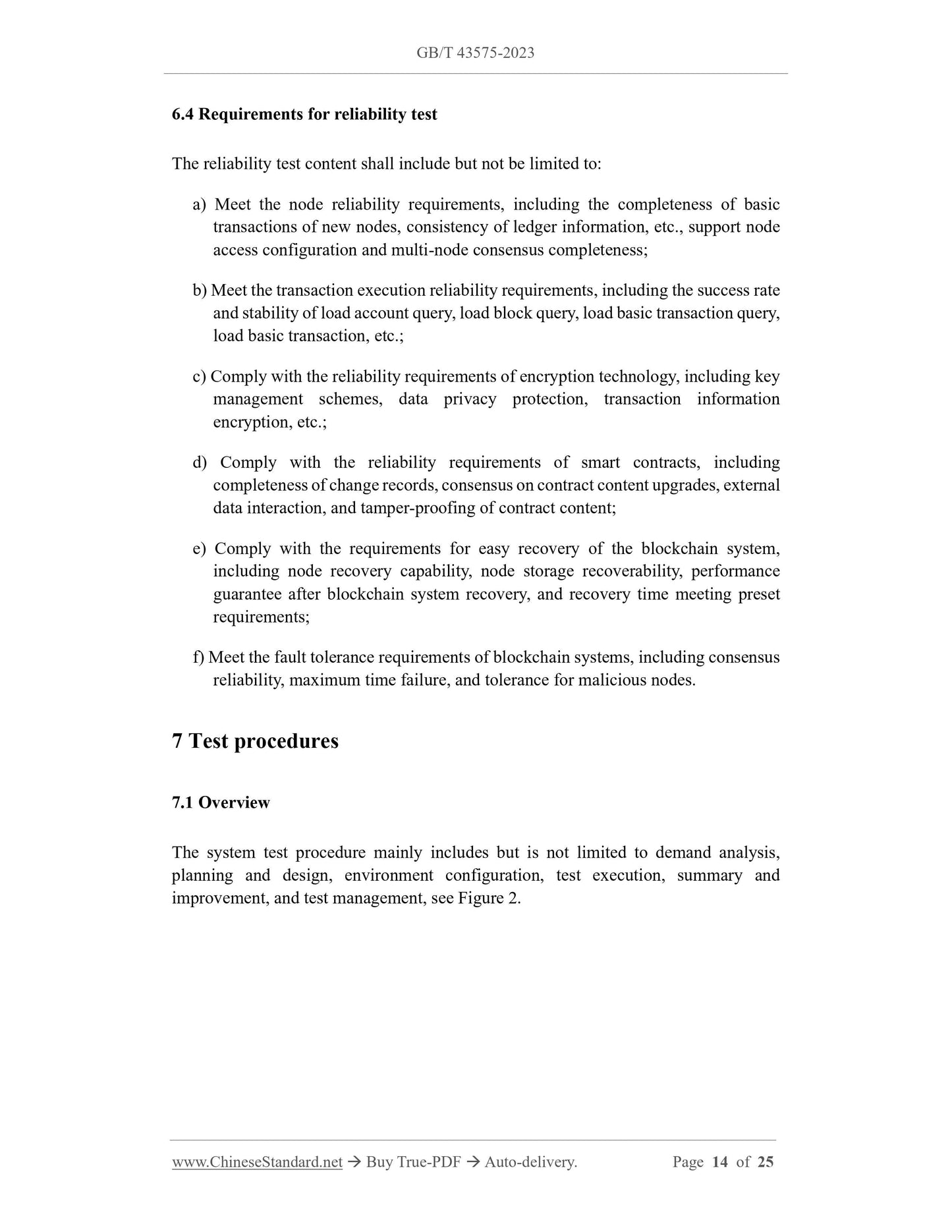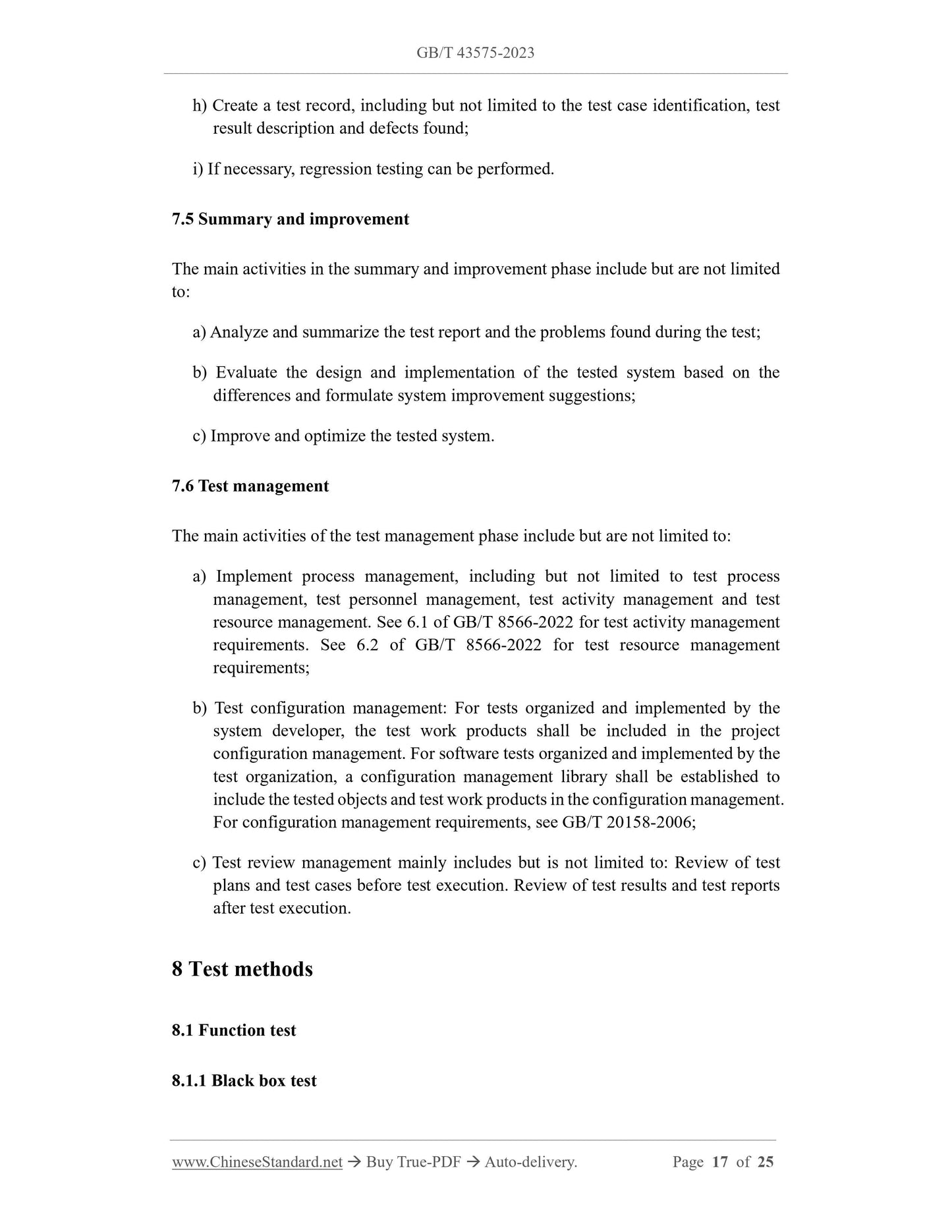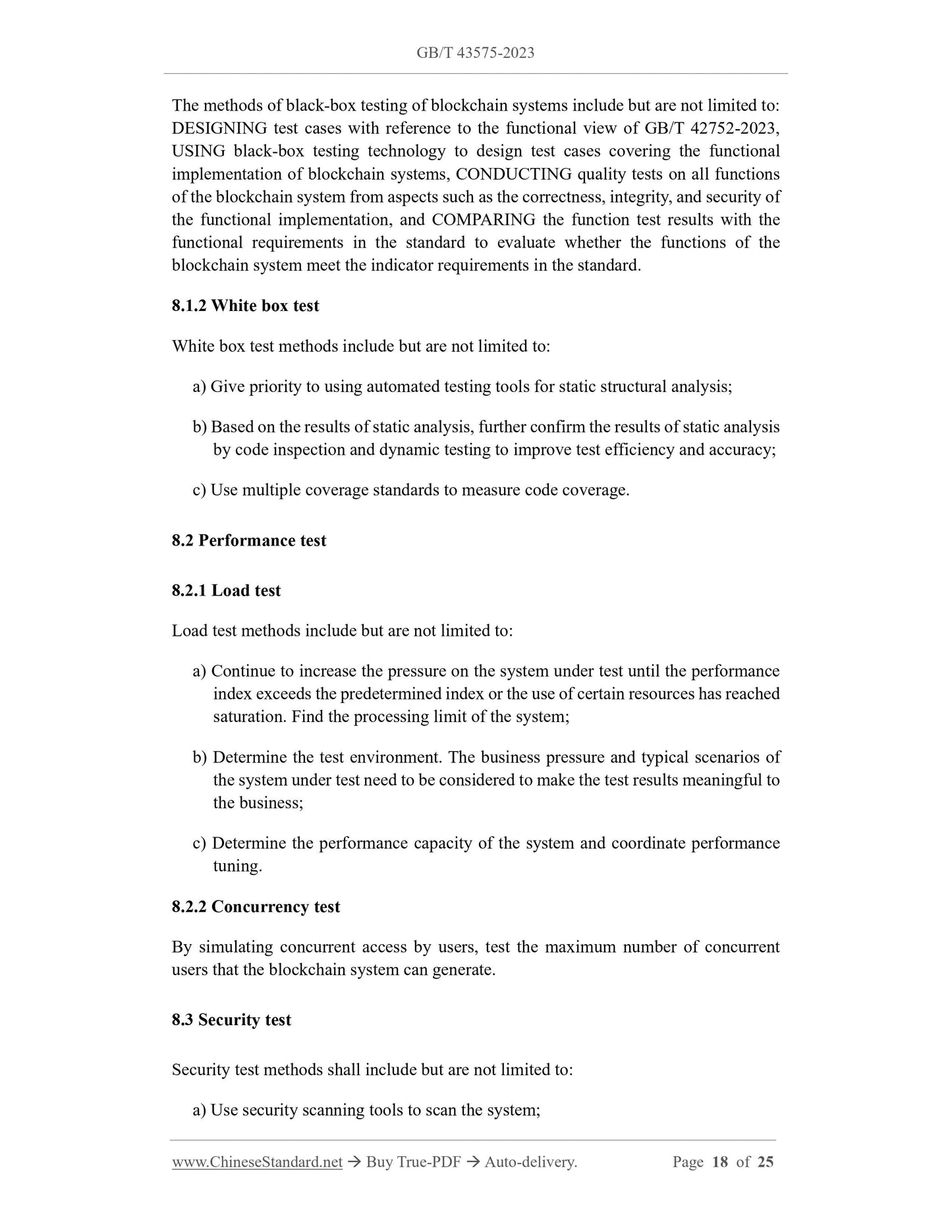1
/
of
8
www.ChineseStandard.us -- Field Test Asia Pte. Ltd.
GB/T 43575-2023 English PDF (GB/T43575-2023)
GB/T 43575-2023 English PDF (GB/T43575-2023)
Regular price
$320.00
Regular price
Sale price
$320.00
Unit price
/
per
Shipping calculated at checkout.
Couldn't load pickup availability
GB/T 43575-2023: Blockchain and distributed ledger technology - System testing specification
Delivery: 9 seconds. Download (and Email) true-PDF + Invoice.Get Quotation: Click GB/T 43575-2023 (Self-service in 1-minute)
Newer / historical versions: GB/T 43575-2023
Preview True-PDF
Scope
This document establishes the testing principles for blockchain systems. It specifies therequirements for function, performance, security, and reliability tests. It also describes
the corresponding test methods.
This document is applicable to: providing a reference for third-party evaluation
agencies or other relevant agencies to conduct blockchain system testing; providing an
internal testing basis for blockchain system builders; providing a basis for blockchain
system users to conduct system selection and acceptance; providing technical support
for the supervision work of industry regulatory authorities.
Basic Data
| Standard ID | GB/T 43575-2023 (GB/T43575-2023) |
| Description (Translated English) | Blockchain and distributed ledger technology - System testing specification |
| Sector / Industry | National Standard (Recommended) |
| Classification of Chinese Standard | L70 |
| Classification of International Standard | 35.240 |
| Word Count Estimation | 18,192 |
| Date of Issue | 2023-12-28 |
| Date of Implementation | 2024-04-01 |
| Issuing agency(ies) | State Administration for Market Regulation, China National Standardization Administration |
Share
